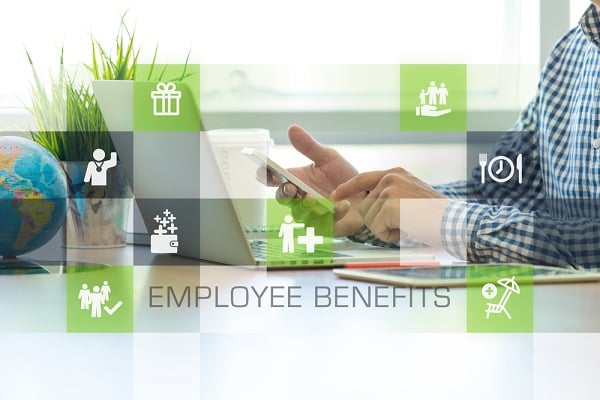 “As businesses shift into thefuture of work, it's as important as ever to understand employees'workplace expectations, challenges and requirements,” says aPaychex representative. (Photo: Shutterstock)
“As businesses shift into thefuture of work, it's as important as ever to understand employees'workplace expectations, challenges and requirements,” says aPaychex representative. (Photo: Shutterstock)
Employers have one view of how well the benefits they offertheir employees fill those employees' needs—but employeesthemselves often have different, or at least much more specific,opinions of how satisfied they are with what they'reoffered.
|That's according to a survey from Paychex of employees and theirassessment of how they feel about their benefits. Employees havevery specific needs, and their view of how toaddress those needs can differ substantially from how employers andHR departments view the situation.
|“As businesses shift into the future of work, it's as important as ever tounderstand employees' workplace expectations, challenges andrequirements,” said Maureen Lally, Paychex vice president ofmarketing. “While employers can implement changes from the top,employees ultimately define what the American workplace looks like.Their habits, preferences and behaviors are what shape companyculture.”
|Related: What happens when you let employees design theirbenefits package?
|Among the findings is that there needs to be a change to howopen enrollment is tackled. More than a third(37 percent) of employee respondents say that an assessment tool tohelp them identify the best plan options is something that theyneed. Older employees feel even more strongly about it, with 60percent of the 50-to-65 crowd citing that as the top change they'dmake to open enrollment.
|Another 18 percent want self-service technology that would letthem go through the enrollment process more efficiently withoutcalling in outside help, and both communication (23 percent) andadditional educational resources (22 percent) were also bigfactors. In fact, 71 percent would prefer that a lot of HRfunctions, such as updating an address, managing retirement orreporting their hours, be automated in a way comparable to the easeand intuitiveness of consumer apps.
|“Enhancing the employee experience through technology thatempowers workers to be self-reliant will reduce the overwhelming HRworkload many employers face and help enable suchbusinesses to attract and retain top talent, boost employeeengagement, and ultimately grow their business,” TomHammond, Paychex vice president of corporate strategy andproduct management, says in the report.
|Keeping up with benefit changes is a challenge for employees,with 29 percent citing it as a concern; 28 percent also regardtrying to predict personal and family needs as one of the mostcomplicated parts of open enrollment. Women more than men cited thelatter as their number-one concern, at 33 percent compared with 24percent.
|More men than women feel that their employers are supportingtheir career growth, at 65 percent compared with 58 percent. Butthat support means a lot to employees, with 97 percent of women and96 percent of men saying they'd stick with an employer whosupported their career development.
|But a sizable portion of both groups don't feel as if they'regetting enough training to be the best they can be in their currentroles, or enough support to advance, with 34 percent feeling theydon't get enough training and 39 percent feeling a lack ofsupport.
|Read more:
Complete your profile to continue reading and get FREE access to BenefitsPRO, part of your ALM digital membership.
Your access to unlimited BenefitsPRO content isn’t changing.
Once you are an ALM digital member, you’ll receive:
- Critical BenefitsPRO information including cutting edge post-reform success strategies, access to educational webcasts and videos, resources from industry leaders, and informative Newsletters.
- Exclusive discounts on ALM, BenefitsPRO magazine and BenefitsPRO.com events
- Access to other award-winning ALM websites including ThinkAdvisor.com and Law.com
Already have an account? Sign In
© 2024 ALM Global, LLC, All Rights Reserved. Request academic re-use from www.copyright.com. All other uses, submit a request to [email protected]. For more information visit Asset & Logo Licensing.








